The high pressure fuel pump (TNVd) is driven by gears from the rear end of the crankshaft.
The pump housing also has a mechanical booster pump that draws fuel from the tank.
To check fuel pump performance:

- - disconnect the fuel line going to the ramp;
- - connect a clean hose to the outlet channel of the high pressure fuel pump;
- - insert the other end of the hose into an empty container;
- - turn on the starter for 30 seconds and measure the flow of the fuel pump.
Fuel pump delivery must be at least 45 ml in 30 seconds at 150 rpm.
If the supply of the fuel pump during starter operation does not correspond to the minimum rate, do the following:
- - check the absence of air in the fuel;
- - check for clogging in the inlet fuel line (article - Repair of the GAZelle Next fuel intake)
If the results of these checks are correct, we check the resistance of the executive valve of the electronic fuel management system:
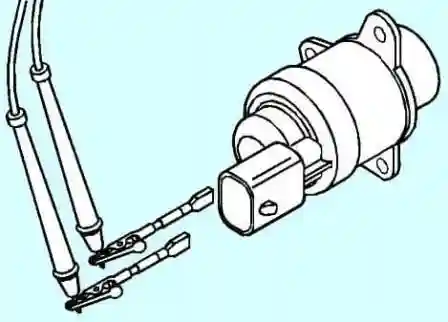
- - we measure the resistance of the executive valve of the electronic fuel control system.
The minimum resistance is 5 ohms, if the resistance value is not correct, we replace the valve.
Remove the wire connector.
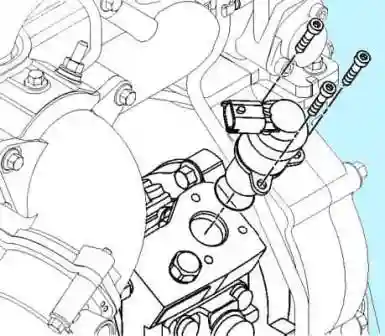
We unscrew the three bolts securing the valve.
Remove the executive valve of the electronic fuel control system by turning it and pulling it out.
O-ring needs to be replaced.
We install a new O-ring, lubricating it with clean oil, install the electronic valve by turning it and inserting it flush with the seating surface. Bolt tightening torque 7 Nm.
After replacing the actuator valve, we measure the fuel pump flow again.
If the minimum fuel supply is not correct, replace the fuel pump and clear the fault codes.
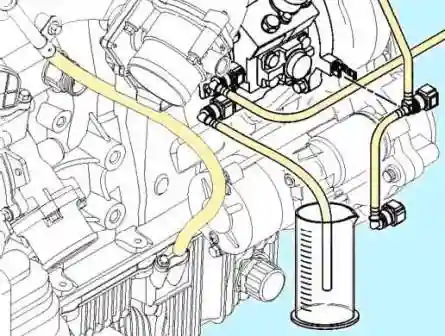
If the engine does not start, check the fuel flow through the fuel return line - this will help identify a malfunction of the high pressure fuel pump.
A malfunctioning drain line bypass valve or fuel pump can cause high fuel flow through the high pressure pump return line.
Remove the quick-release fitting for draining fuel from the injection pump.
To reduce the risk of fuel leakage from the combined rail and injector drain line, plug the flexible fuel drain line with a fuel line plug (P/N 4918464).
We put a drain hose with a quick-release fitting (No. 4918434), or its equivalent, on the drain pipe of the fuel pump.
Place the end of the fuel drain hose in a measuring jar.
Start the engine and bring it to idle.
When the fuel begins to flow into the measuring cylinder, we measure the flow rate in 30 seconds.
Maximum flow rate for 30 seconds at nominal speed of 800 rpm should be 310 milliliters.
Replacing the high pressure fuel pump
Disconnect the negative battery terminal.
Removing the fuel filter (article - Maintenance of the GAZelle Next fuel system), to improve accessibility.
We clean pipelines, fittings from dust and dirt.
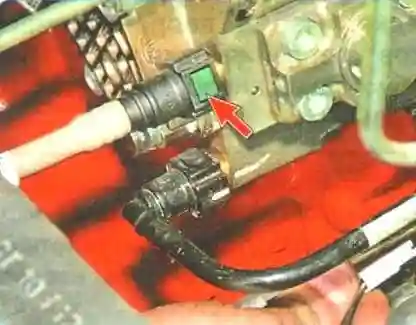
Squeeze the clamps and disconnect the tip of the supply pipe from the pump
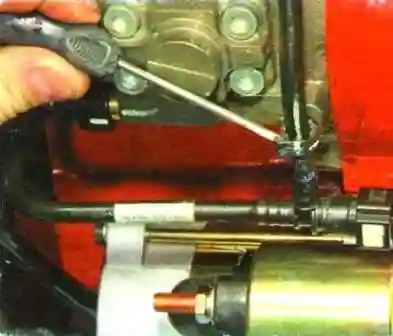
Unfasten the return pipe holder and remove the tube from the holder
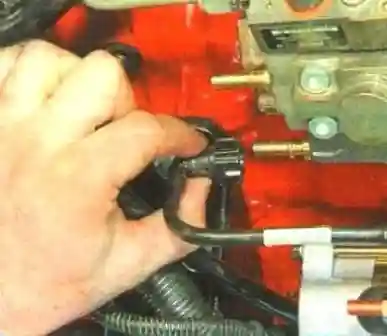
Squeeze the clamps and disconnect the tip of the return pipe from the injection pump
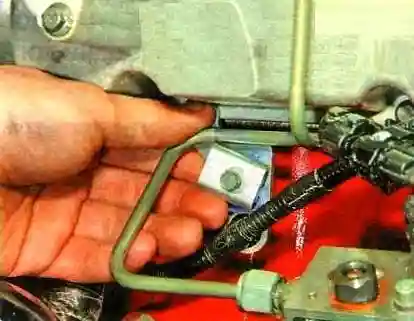
We unscrew the holder fastening bolt and disconnect the fuel supply pipe to the rail from the bracket
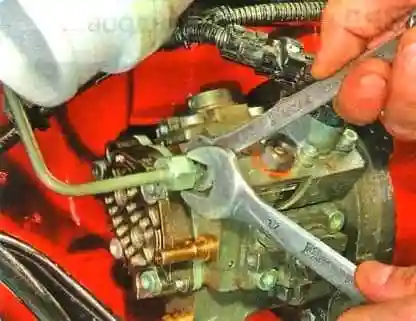
Unscrew the union nut securing the fuel supply pipe to the rail
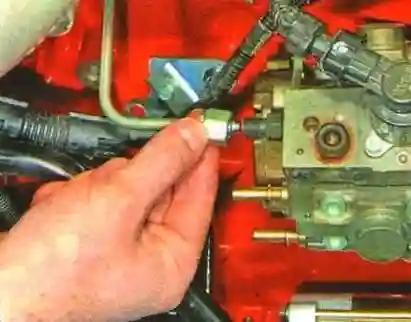
Disconnecting the handset
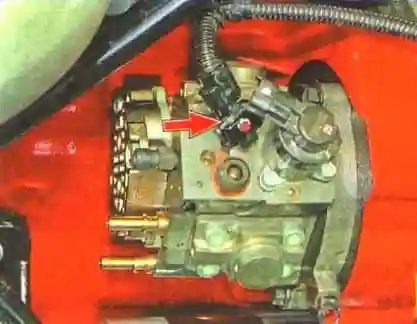
Press the latch and disconnect the wire block from the fuel shutoff valve
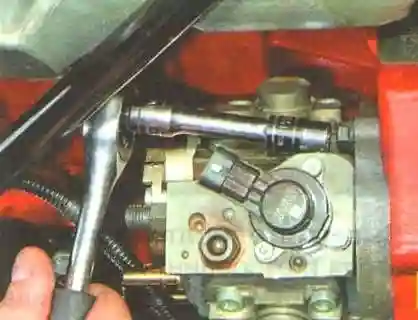
We unscrew the three bolts securing the injection pump to the cylinder block
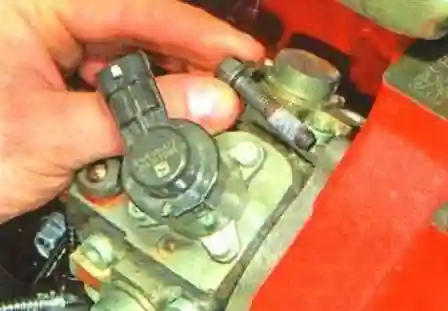
Removing the bolts from the holes
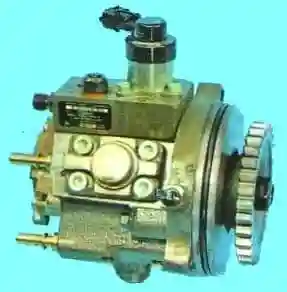
We remove the injection pump from the mounting hole (the pump is sealed with a rubber ring, installed with an interference fit).

Install a new rubber ring on the pump housing
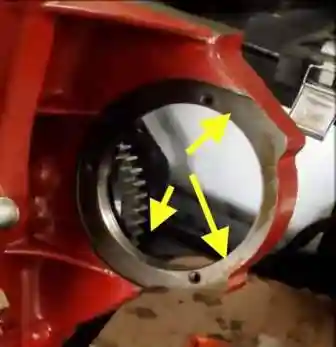
Cleaning the walls of the hole in the block
Lubricate the sealing ring on the pump housing and the walls of the hole in the pump block with clean engine oil.
We follow during the installation process so that the teeth of the pump gear coincide with the teeth of the pump drive.
The tightening torque of the injection pump mounting bolts is 25 Nm.
Tightening torques for fuel line fittings 27±2 Nm





